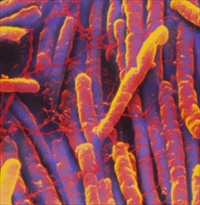Members Login

Channels
Special Offers & Promotions
Reducing the C. diff burden at Gloucestershire Hospitals
 Cases of Clostridium difficile
infection have been successfully reduced at a Hospitals Trust in
Gloucestershire following the introduction of measures that includes hydrogen
peroxide vapour bio-decontamination. Clostridium difficile is the leading cause of hospital-acquired
diarrhoeal disease in the UK. Controlling its incidence in hospitals is a key
target for the government and healthcare professionals.
Cases of Clostridium difficile
infection have been successfully reduced at a Hospitals Trust in
Gloucestershire following the introduction of measures that includes hydrogen
peroxide vapour bio-decontamination. Clostridium difficile is the leading cause of hospital-acquired
diarrhoeal disease in the UK. Controlling its incidence in hospitals is a key
target for the government and healthcare professionals.Three years ago, Gloucestershire Hospitals implemented a series of infection control procedures ranging from the introduction of cohort wards, antibiotic control and empirical treatment for suspected C. diff infection cases, to Bioquell's hydrogen peroxide vapour (HPV) bio-decontamination. As a result of these measures, the Trust achieved a 65% reduction in C. diff infection rates.
Last year, just 267 cases were recorded, compared to 771 C. diff infection cases reported in 2007. Significant reductions were achieved almost immediately (518 cases in 2008 and 302 cases in 2009) demonstrating the effectiveness of a coordinated approach.
Over the three-year period, 2,763 areas were decontaminated using HPV within the hospital. HPV is a highly effective treatment that can clear the rooms of all biological contamination, providing a clean environment for patient re-admission. Typical cycle treatment times vary by room size. At Gloucestershire Royal Hospital, an average size single occupancy room took approximately 2 hours to decontaminate. Larger multi-occupancy bays took on average 4 hours to decontaminate after which patients could be re-admitted.
C. diff endospores are usually highly resistant to decontamination and can survive for months on surfaces such as taps, sinks, bed rails, light switches and tables, creating a reservoir of infection. C. diff can then be either directly transferred to patients via the environment or indirectly transferred to patients via the hands of healthcare workers. The HPV process ensures complete surface sterilisation as the vapour penetrates throughout the room. It is also highly effective against endospores, breaking down cellular structures and the internal cell contents.
Commenting on the success, Deputy Nursing Director Paul Garrett said: "HPV technology has played an important part in helping to reduce C. diff infection as part of an overall bundle of interventions. The approach helps to decontaminate hard-to-clean medical equipment, such as monitors, due to the vapour process. The Bioquell system has now been successfully integrated into the daily operations of our hospitals."
For more information visit www.bioquell.com
Media Partners


